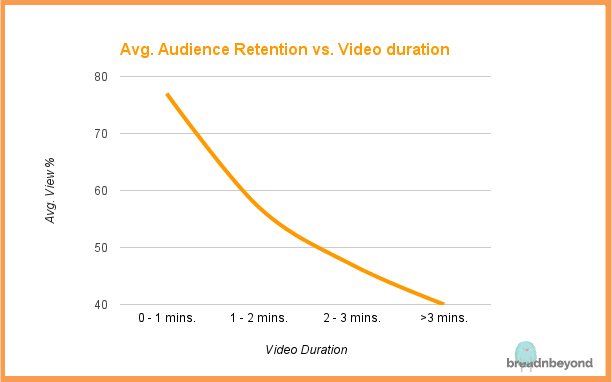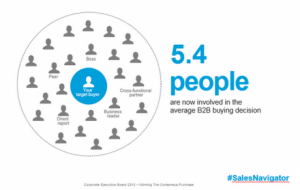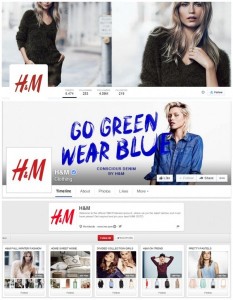
Your audience is watching a lot of social videos. Video content had been taking over the Internet rapidly ever since smartphones started being mass-produced and social media’s popularity rose. In fact, over 70% of Internet users are routine viewers of social videos.
Animoto surveyed over 1,000 consumers in 2015 and found that 84% had liked a company video in their news feed and that nearly half (48%) had shared a company video on their profile.
If you’re not making videos for your campaigns, I’m going to tell you right now that you’re missing out on a huge opportunity.
Social media is a goldmine for your marketing team, especially if you are doing video campaigns. You can gain a lot from it even if you are still a beginner in social video marketing.
Our guide to amplifying social video reach will help you reach or increase your target audience.
What are social media videos?
The meaning of the term social media videos can vary from a professional-made Adidas commercial you see on your Facebook timeline to a vertical video of your friend Anne’s pet dog and everything in between.
But my definition of social media video is a digital video that’s been designed to be seen and published on social media.
With that said, there are some main types, or categories if you will, that you should know:
- Promo video
A promoted video is any video that aims to eventually sell a product. It doesn’t always refer to those annoying ads you see on pre-roll when you try to watch YouTube.
Sponsored videos are very popular right now because many content creators work with brands as one of their income sources.
- Content video
A content video is the kind of video you will see coming from a creator in a certain niche. These videos don’t try to sell you anything.
Well, not at first, anyway. These videos work as lead magnets. They aim to impress you with the content they made so you give something up in return, like your email address or your Facebook like.
For example, companies’ social media pages, like Tastemade, Tasty and Food Network come out with content videos about food and beverages because they actually “sell” their content.
Their videos are what make them respectable companies in their niche.
With that said, it’s understandable that they put great efforts to promote their videos. And often times their videos receives more than tons of views. The one above has 106 million views by the time I write this article.
- Personal video
Basically, it is just like the name says: personal videos. The personal video category covers a large variety of videos.
Virtually anything that anyone uploads to their own social media profile can be categorized under personal video, regardless of whether it’s further monetized or not. Yes, people get money if some large publishing network (like UNILAD, LAD Bible, etc.) publishes their video.
It could be a video of their pet dog, a video of their friend being goofy, or a palm-sweating video of daredevils hanging around on rooftops, like this.
Social Video vs Viral Video
Many people confuse social video and viral video. Viral videos usually don’t serve any purpose other than, well, being viral. Like this video of a cat playing piano.
When it comes to marketing, social videos don’t need tons of views to be considered successful. They just need to reach the right people who are your target market. A video telling your product’s story can get 750 views and still be a success because it reaches your target market.
Virality is a good trait for any marketing video. However, you shouldn’t aim solely for that. Yes, shareability is important, but shareability among your target market is the key.
Making your videos
First things first: You have to decide where you’re going to publish it. Every social media has a unique audience, and you should not mix them up.
A video that performs well on Facebook might need some serious revisions and edits before it can satisfy your audience over on Instagram. In most cases, making an entirely different video is strongly recommended.
The strongest type of video, regardless of where you will share it, is content video. But, as I mentioned before, you don’t have to get tons of views as long as your video content isn’t your main selling point.
You give something that your audience can learn from, preferably something that relates to your product: basically an educational video that directs viewers towards your conversion funnel.
When you achieve that, you can call your video a success and improve from there. However, there’s a rule of thumb: don’t share blindly.
Now, let’s get to the main reason you’re here.
Amplifying Video’s Reach in Social Media
Building followers on social media isn’t an easy task, especially when it comes to video content. There are few things that you could do to amplify your video’s reach on social media.
- Make sure your video is shareable from the start.
You’re sharing a video to social media, not to a news site. You don’t have to get every little detail out.
With that in mind, your social video should be as short as possible with a minimum compromise on the amount of content. In other words, it has to be compact.
As for the content of your video, a great way to make a shareable video is by listening to your social media followers first. Find out what kind of videos they have been sharing and analyze whether you can use that particular topic or not.
- Don’t sell stuff. Tell stories.
The great thing about telling stories to sell your product is that you have a chance to evoke certain emotions in your audience.
Establishing the plot, the setting, and the hero of your video makes your video more enjoyable (or emotional) to watch, and thus more shareable.
This video from Chocolate Rescue is an emotional piece, particularly for dog owners. And guess what? It’s been viewed over 300,000 times and has been shared nearly 10,000 times.
- Involve viewers in the story.
Viewers are more likely to share campaigns in which they feel involved. Now, all you have to do is shape your story using “the hero’s journey.”
This formula has been around since… forever. Almost all top-grossing movies use this type of storyline (think Star Wars, Lord of the Rings, Transformers, etc).
All you have to do is shape your story around your audience as the hero.
Yes, that’s right. Your audience is the hero. You might have thought that you’re the one selling something, so you should be the hero.
But if you set it up that way, your audience won’t feel involved–and the chance of them passing along your video drops.
- Keep it short.
Wistia conducted a study that put to test the phrase “shorter is better.” They used two videos with the same content. One is 90 seconds long and the other is 30 seconds long.
Here’s what they found:
“Even though viewers were exposed to the same exact content, the drop-off rate of the 90-second video was much higher. By the end of the 30-second video there were about double the number of viewers than at the same point in the 90-second video.”
I recommend that you keep your video under 60 seconds. Here’s why:
We conducted research on how shorter and longer videos differ in retaining audiences. We used our YouTube channel with 600+ videos and 600,000+ views. Here’s the result:

The graphs shows that a video has the best audience retention when it’s under 60 seconds.
Besides, you will have to be careful with length when it comes to social video anyway. Most social media platforms have restrictions on video length and size.
- Launch the video like a rocket.
It’s important that you have carefully planned how you’re going to get your video into the social media realm. It’s like any marketing campaign: The most important part is how it starts.
Think of it as launching a rocket to space. It has to use massive thrust power before it can penetrate the atmosphere and float around smoothly.
Even though you have designed your video to be shareable from the start, it’s still your responsibility to start the initial buzz. You have to hit hard with every channel you have at your disposal. You should even consider using paid ads for this part.
In addition to that, reach out to influencers about your video. If your video is good enough (and if you’re lucky enough), you’ll get a huge amplification of reach.
Once you strike the match, it’s much easier to make a wildfire. Your campaign will grow faster and steadier.
This outreach method helped us get our first 100,000 views on YouTube with our self-made Pinterest video here:
Are you ready to make your first social video? Make sure you check out our video sharing tricks for better engagement in social media.
Digital & Social Articles on Business 2 Community(88)
Report Post







